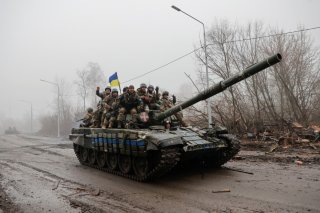‘Red Light Blinking’: IAEA Alarmed By Fighting Near Ukrainian Nuclear Plants
When Russia invaded Ukraine through neighboring Belarus, it fought a battle against Ukrainian forces at Chernobyl, during which shells damaged the concrete sarcophagus containing the ruined nuclear reactor.
Rafael Grossi, the director of the International Atomic Energy Agency (IAEA), has described the ongoing situation at Ukraine’s Zaporizhzhia nuclear plant—currently occupied by Russian troops—as an unsafe “red light blinking” and has attempted to secure clearance for IAEA inspectors to visit the site, according to ABC.
Grossi noted in a twenty-six-page report posted to his Twitter page that the Zaporizhzhia plant has become disconnected from the IAEA’s normal safeguards evaluation process during the course of the war. He observed that the plant remained “in active operation,” and accordingly, there would be “technical activities and … inspection activities that need to be performed.”
“So the situation as I have described it, and I would repeat it today, is not sustainable as it is,” Grossi added.
The IAEA chief said that Ukrainian officials were reluctant to allow inspections at “one of their own facilities under the authority of a third power,” referring to Russia. “It’s something that will still require consultations. We are not there yet.”
He added that Russian officials had not allowed the IAEA permission to visit the Zaporizhzhia site.
Prior to the Russian invasion, Ukraine had fifteen operational nuclear reactors, making it one of the largest producers of nuclear energy in the world. Ukraine is also home to the Chernobyl nuclear facility, which suffered catastrophic damage in a nuclear meltdown in 1986. In the aftermath of the disaster, a section of northern Ukraine around Chernobyl was maintained as an “exclusion zone” in which long-term human habitation was forbidden.
When Russia invaded Ukraine through neighboring Belarus, it fought a battle against Ukrainian forces at Chernobyl, during which shells damaged the concrete sarcophagus containing the ruined nuclear reactor. Russian vehicles also reportedly drove through areas of the exclusion zone with heavy radiation, kicking up radioactive dust and leading to the hospitalization of dozens of Russian soldiers from radiation poisoning in Belarus.
Russian and Ukrainian forces also fought another battle at the site of the Zaporizhzhia reactor, leading to a fire at one of the reactor sites. The fire was ultimately contained without any dangerous consequences.
“There cannot be any military action in or around a nuclear power plant,” Grossi complained. “This is unprecedented to have a war unfolding amidst one of the world’s largest nuclear infrastructures, which … makes for a number of fragile or weak points that could be … exploited willingly or unwillingly.”
“So this requires a lot of activity on our side,” Grossi added, claiming that he needed cooperation from both Russia and Ukraine in order to maintain the plants’ safety.
Trevor Filseth is a current and foreign affairs writer for the National Interest.
Image: Reuters.

